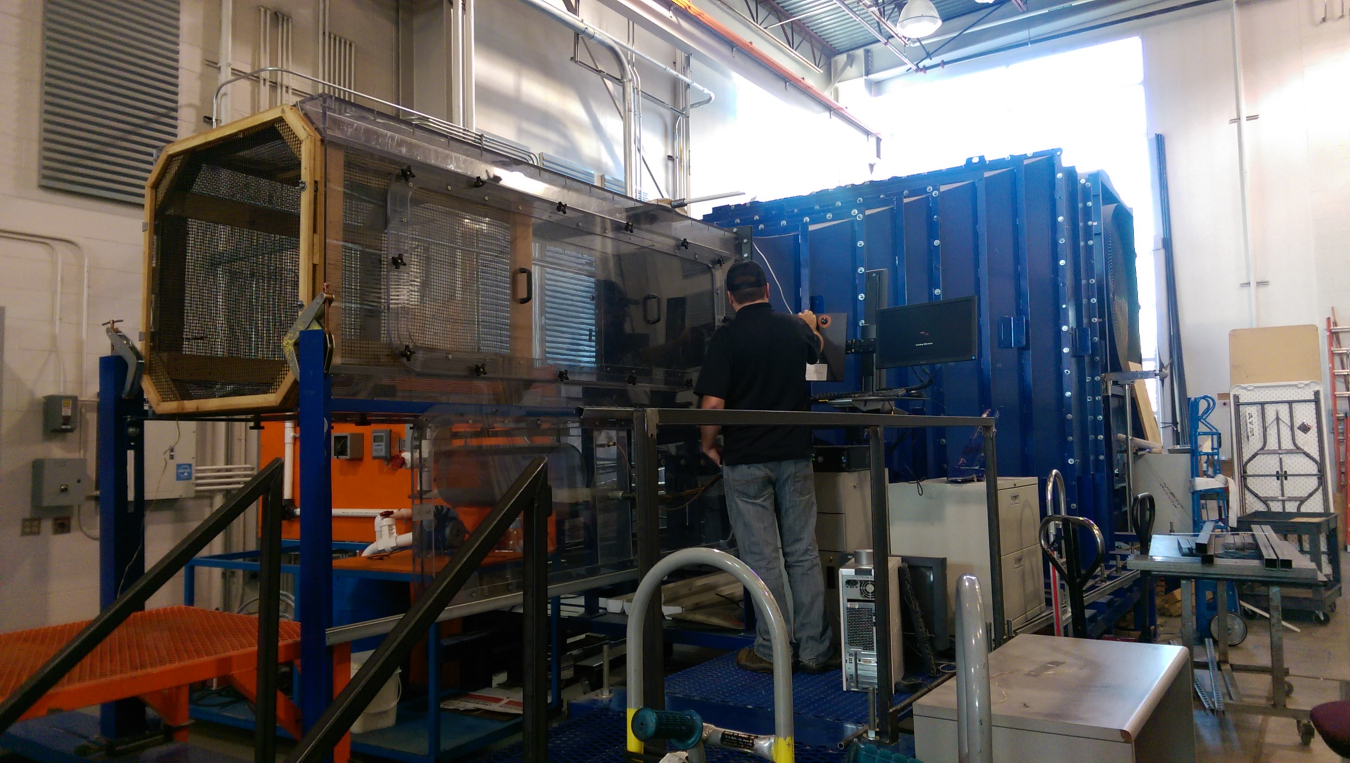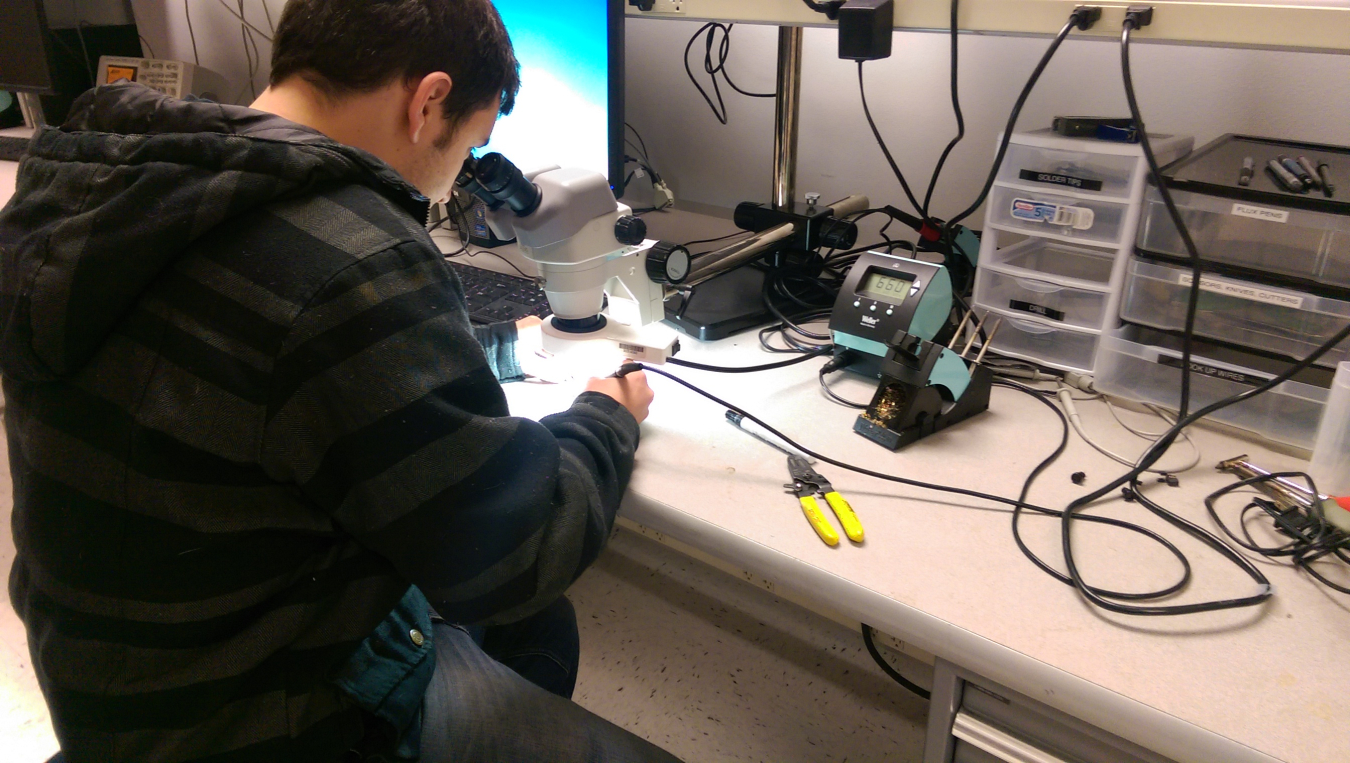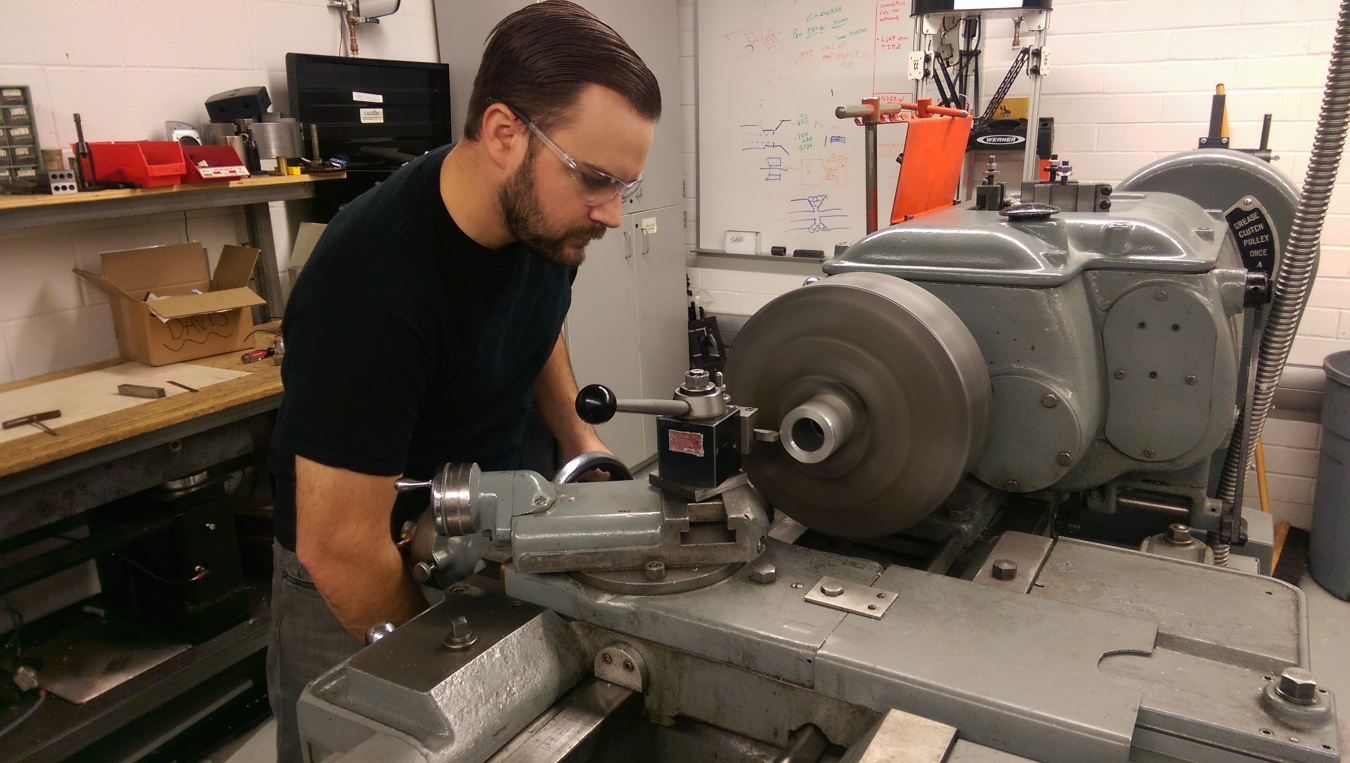Team Roster: Anaysa Aguilar, Mechanical Engineering; Chris Davis, Mechanical Engineering; Dennis Twitty, Mechanical Engineering; Omar Alozaymi, Electrical Engineering; Joe Fercho, Electrical Engineering; Seth Townsend, Electrical Engineering; Carson Heagen, Business; Alex Hernandez, Business; Ashley Hulse, Business; Colin Lesch, Business; Joseph Skogen, Business

Student Chris Davis fires up the wind tunnel in the Boise State high bay.

Student Joe Fercho in the electronics lab, working on the controls for our wind turbine.

Chris Davis works on the base in the Boise State Machine Shop.
Team name:
Why wind?
Students from Boise State University have a variety of reasons for participating in the U.S. Department of Energy Collegiate Wind Competition 2016. The wide range of applications for wind energy has the potential to change the way the world works and students want to play role in having a positive impact on the future of renewable energy. Students also joined the competition because they believe it will be a great opportunity to work with an interdisciplinary team and practice real-world skills to work on preparing for future interactions in the business world.
Project description:
This project consists of a wind turbine design task developed for a market that is determined by the business team. The team is tasked with designing the wind turbine and the load for the application market and with competing its design against other universities. For the application of the load, the team is considering a pump attached to a water filtration system that can service many areas where freshwater is not common. The leading idea for the design of the load is for the wind turbine to power a pump that moves dirty water to a tank where it will go through a gravity-fed filter and be stored in a larger tank for large-scale use. The intent is to have enough freshwater storage that during periods of time where wind is not available, there would be plenty of water for use.
Game plan:
Engineers will attend weekly project update meetings to go over concerns and talk about design strategies. Business students will hold a separate weekly meeting for discussions and task assignments. The team will establish a weekly update email that will come from each team lead and that covers any significant news and/or struggles each team is experiencing. There will also be as-needed meetings including all student teams.
Team hurdles:
Business Plan
The business plan presents a significant challenge with having to justify the team’s design with proof that a market exists for its solution. This is a new element of the competition and one that is relatively new to most of the team. The drive and passion of its business team will be key to overcoming this challenge.
Technical Design
The team faces a challenge producing enough power for the end user of the product prototype. The team thinks the load side of the design will be sufficiently powered by a full-scale wind turbine; however, accurately representing that design as a scale model prototype has already proven to be challenging. To overcome this challenge will take some creativity, something not lacking with the team.
Deployment Strategy
The team’s project site could be anywhere, meaning the challenge could come from the lack of documentation and information available for the location in which the turbine will be developed. Determining availability of equipment for the installation of the turbine and load is another challenge to consider. This is the largest perceived challenge at this juncture for the team because of lack of experience in wind profiling. The team will lean on a lot of research and the experience of principal investigators for guidance on overcoming this obstacle.
Turbine Performance Testing
The biggest challenge will most likely be more cerebral—not allowing nerves to get the better of the team. Everyone on the team is taking the competition very seriously, as is the staff. The pressure to do well may be self-inflicted, but it will be that sort of pressure that will drive the team to stay the extra hours at night to make sure they produce the best solution.
Bonus Challenge
The biggest challenge the team faces is successfully executing a scale model of what they have envisioned for our load. As described in the technical design challenge, the power from the turbine could be a limiting factor for the team’s current design. When that obstacle is overcome, the team can look forward to presenting a unique and widely available solution to help many people in need.
Team takeaway:
Beyond a win, the most important thing for team members to take away is experience. The challenges they will face in this competition are very similar to the ones they will see in real life. As a group, they are already enjoying working with multiple disciplines and learning how to work together. They also would like to learn how to be innovative and do something that sets them apart from the other teams. This could be the way their business team handles its side, the design the mechanical team comes up with, or the code the electrical team develops.
In addition, the competition taking place alongside the AWEA WINDPOWER conference will provide opportunities for members of the team to network and absorb information about the wind industry. To get the opportunity to see first-hand new products entering the market as well as long-standing tried-and-true products on display will be valuable experience setting team members apart from other graduating students. And the opportunity to see what jobs are available in the wind industry that they might not have anticipated will give them an edge when it comes time for graduation.

